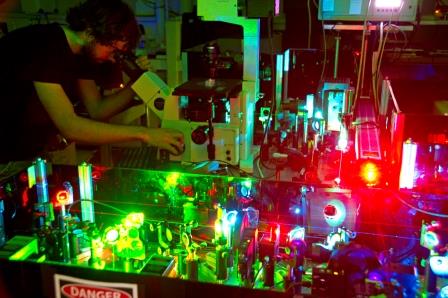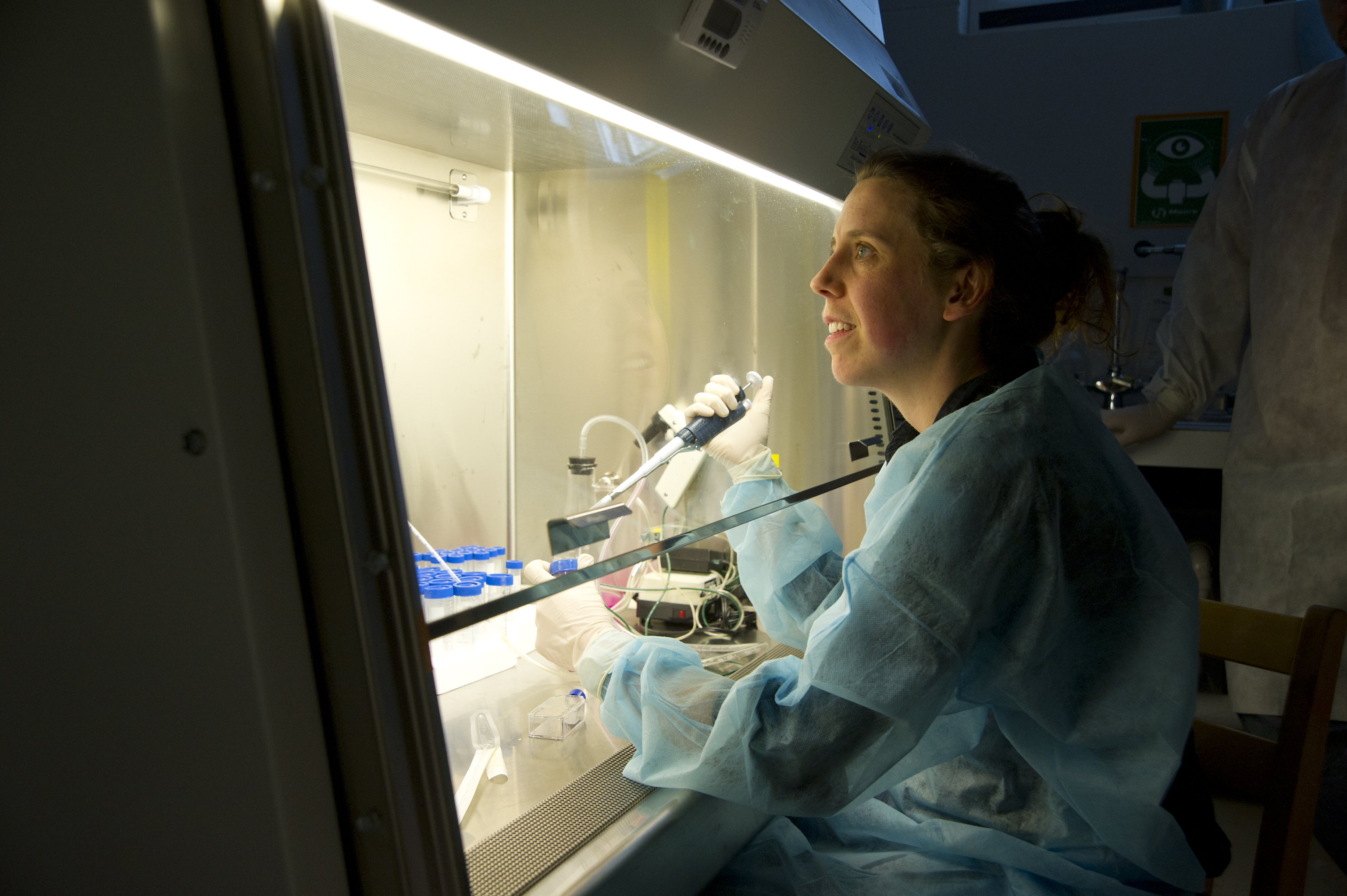Fluorescence PhotoActivation Localization Microscopy (FPALM)


To further advance the research and educational capabilities of the University of Maine and the Institute for Molecular Biophysics (IMB), we propose to capitalize on our expertise in sum-frequency (SF) and fluorescence (FL) spectroscopies to develop an instrument with unique capabilities crucial to the study of a broad range of systems from materials to bio-membranes. This imaging spectroscope will measure molecular conformations, photophysical properties, and dynamics in a temporal regime which is inaccessible, yet entirely complementary, to the 4Pi microscope recently funded by the NSF.
Sum Frequency (SF) is a vibrational technique based on non-linear optical mixing of photons of two different energies. SF provides detailed structural information on an ensemble of molecules at an interface within an optically-defined sample volume, including absolute orientation and conformational configuration. SF has been used to image heterogeneous thin film systems in a number of instrumental geometries including transmitting , and reflective substrates. For example, in two recent publications by Cimatu and Baldelli, SF was used to observe the spatial distribution of CO on platinum surfaces and chemically distinct regions of self-assembled alkane-thiol monolayers. Fluorescence (FL) spectroscopy complements SF by providing access to single-molecule properties of individual species within an ensemble of molecules on 10-12 s to >102 s timescales. Ideally, both FL and SF methodologies would be employed simultaneously yielding localized dynamics of the single fluorophore (FL) and spatially correlated structural information about its local surroundings (SF). This ‘particle-in-a-bath’ approach has found limited implementation due to differing optical requirements and inherent difficulties in distinguishing between the two signals; the proposed instrument will circumvent these issues by exploiting fundamental differences in the optical nature of SF and FL.
